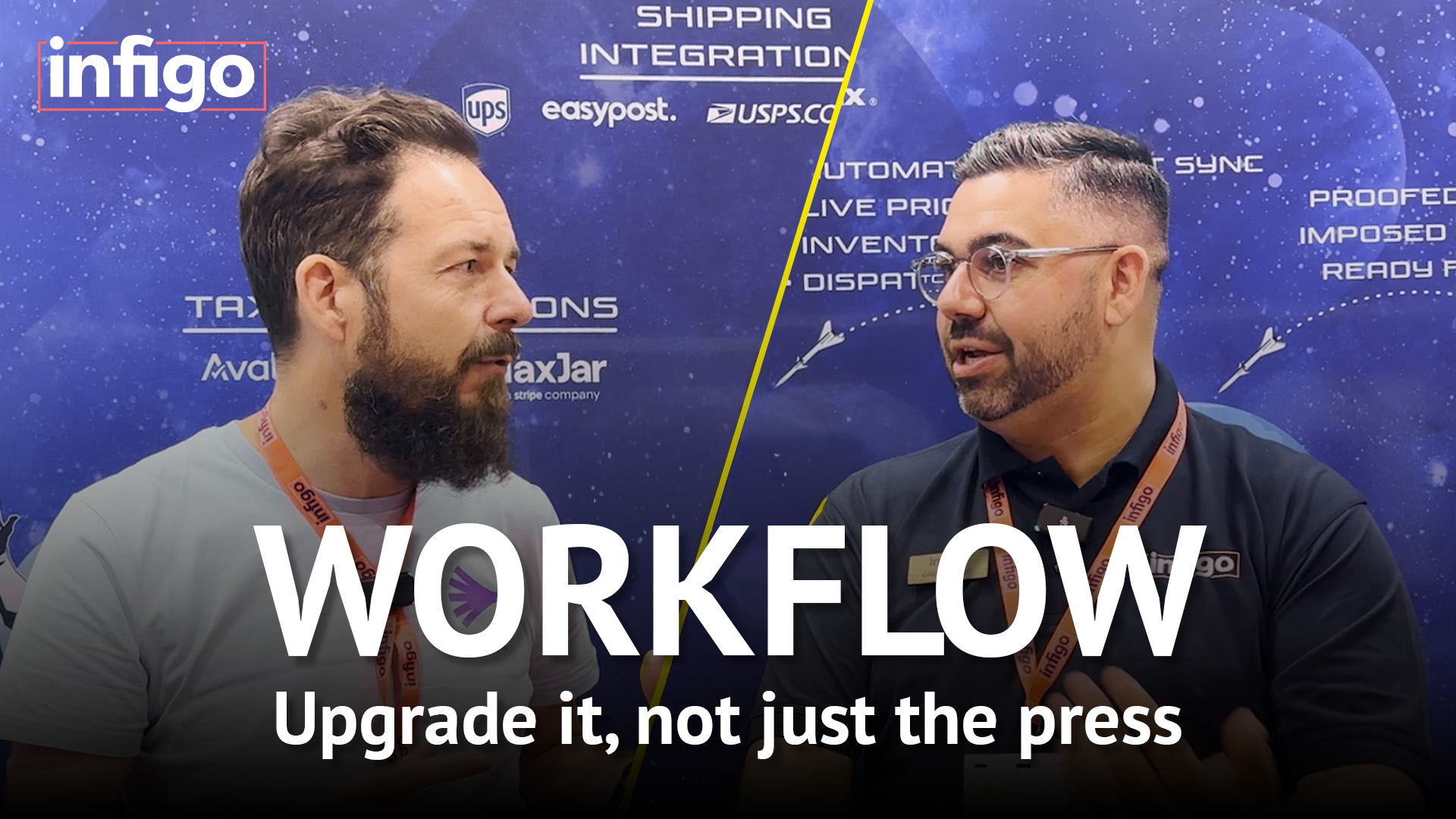Taking your print orders online 24/7 through a web-to-print platform sounds ideal. After all, these platforms promise automation, smoother ordering, and faster turnaround.
But without proper integration into your broader tech stack, even the most advanced solution can become a bottleneck.
If your web-to-print platform can’t communicate with your MIS, shipping providers, accounting software, or printing hardware, you risk doubling your order volume, while tripling your team’s workload. You’re left manually re-entering data, tracking jobs in spreadsheets, and constantly fixing preventable errors.
That’s not a sustainable business model.
The good news? It doesn’t have to be this way.
In this blog, we’ll explore why integration is critical for print workflows, what to look for in a platform, and how to ensure your solution boosts efficiency and delivers measurable ROI.
What Is Integration—And Why Does It Matter?
Integration simply means your software systems can communicate with each other and share data, typically through APIs (Application Programming Interfaces). APIs enable automated, real-time communication between your key business tools.
For print businesses, this might include syncing your web-to-print storefront with:
- your MIS or ERP for job scheduling and costing
- a CRM for customer data and marketing
- shipping providers for dispatch updates
- design tools or cloud storage for artwork
- accounting software for invoicing and reconciliation
When these systems are connected, you create a seamless, end-to-end workflow. Automation cuts down manual tasks, minimizes errors, and frees up your team to focus on higher-value work.
The Cost of Disconnected Systems
Without proper integration, print businesses often fall into a cycle of inefficiency
- Data Duplication
Staff must manually re-enter order information into production or invoicing systems. This not only wastes time but also increases the risk of human error, leading to costly mistakes or reprints. - Broken Customer Journeys
Delays between order placement and production updates can cause confusion and erode trust. Customers want real-time updates—if your systems don’t communicate, you can’t deliver on that expectation. - Missed Opportunities
Without integrated CRM and analytics tools, valuable customer data remains siloed. You miss insights on repeat buyers, popular products, or upsell opportunities. - Inflexible Scaling
As order volumes increase, disconnected systems create bottlenecks. You’re forced to hire more staff just to manage admin—driving up costs and complexity.
Must-Have Integrations for Modern Print Businesses
Not all web-to-print platforms are created equal. Some have great front-end features but lack the ability to integrate with your core systems—resulting in more manual work, not less.
Before investing, ensure the platform integrates with:
MIS/ERP Systems
A fully integrated web-to-print platform should automatically push orders into your Management Information System or Enterprise Resource Planning tools. This enables real-time job scheduling, inventory control, and cost tracking.
It also ensures consistency between what customers see online and what happens on the production floor.
CRM Platforms
Linking your web-to-print storefront with CRM software allows for smarter, data-driven marketing. Track purchase history, trigger personalised emails, and identify loyal customers or prospects.
Shipping Providers
Integration with couriers like UPS or USPS enables:
- real-time shipping rates at checkout.
- auto-generated shipping labels.
- order tracking updates sent directly to customers.
Design & File Management Tools
Automatically pull customer-uploaded files or use cloud-based design tools for live previews. Integrated prepress workflows reduce file handling time and improve accuracy.
Accounting Software
Platforms like Xero, QuickBooks, or Sage should sync with your order data to create invoices, reconcile payments, and manage tax calculations automatically.
How to Evaluate Integration Capabilities
Essential Questions
- Does it offer an open API?
A robust API allows your developers—or third-party apps—to connect with the system.
- Are there pre-built integrations?
Look for platforms with dedicated connectors for popular print MIS and other platforms.
- How flexible is the platform?
Can it adapt to your unique workflow, or will it force you to change how you operate?
- Is there strong developer support?
Good documentation, active forums, and responsive tech teams make integration smoother.
- What’s on the vendor’s roadmap?
If a key integration isn’t yet available, make sure it’s planned, and ask when it’s coming.
Real-World Benefits of Integrated Print Workflows
- Time Savings
Automation replaces hours of admin with real-time data exchange. According to McKinsey, companies using automation effectively can reduce process time by up to 60%.
- Improved Accuracy
Fewer manual inputs mean fewer errors. Integrated systems validate and cross-check data, ensuring orders flow through without mistakes.
- Better Customer Experience
From live tracking to timely confirmations, customers stay informed at every step, without your team lifting a finger.
- Scalability
As order volumes grow, integrated systems absorb the workload. You can scale without adding headcount.
- Data-Driven Decisions
When systems are connected, data becomes visible and actionable. You can track trends, forecast demand, and identify your most profitable customers or products.
Integration Is Essential
Investing in a web-to-print platform is a smart move but only if it integrates seamlessly into the rest of your business. Otherwise, it risks becoming an isolated tool that adds more friction than value.
The most successful print businesses treat integration as a core requirement, not an afterthought. Whether you’re looking to boost efficiency, scale operations, or deliver a better customer experience, platform connectivity is key.
Before committing to any platform, audit your current systems. What tools must your web-to-print platform connect with? Once you know that, make integration a non-negotiable on your buying checklist.
Discover More
To learn how Infigo could transform your workflows, download our free guide today Workflow Bottlenecks: The Hidden Cost in Print Operations and How to Fix Them and start eliminating workflow bottlenecks in your print business now.




